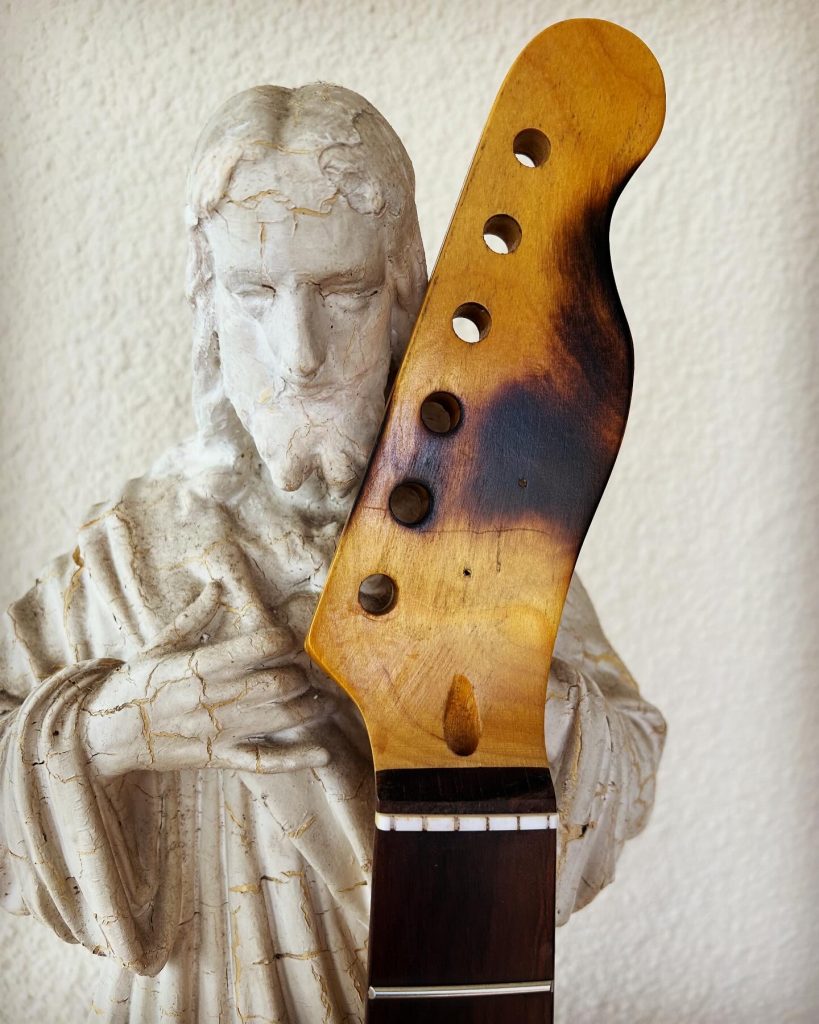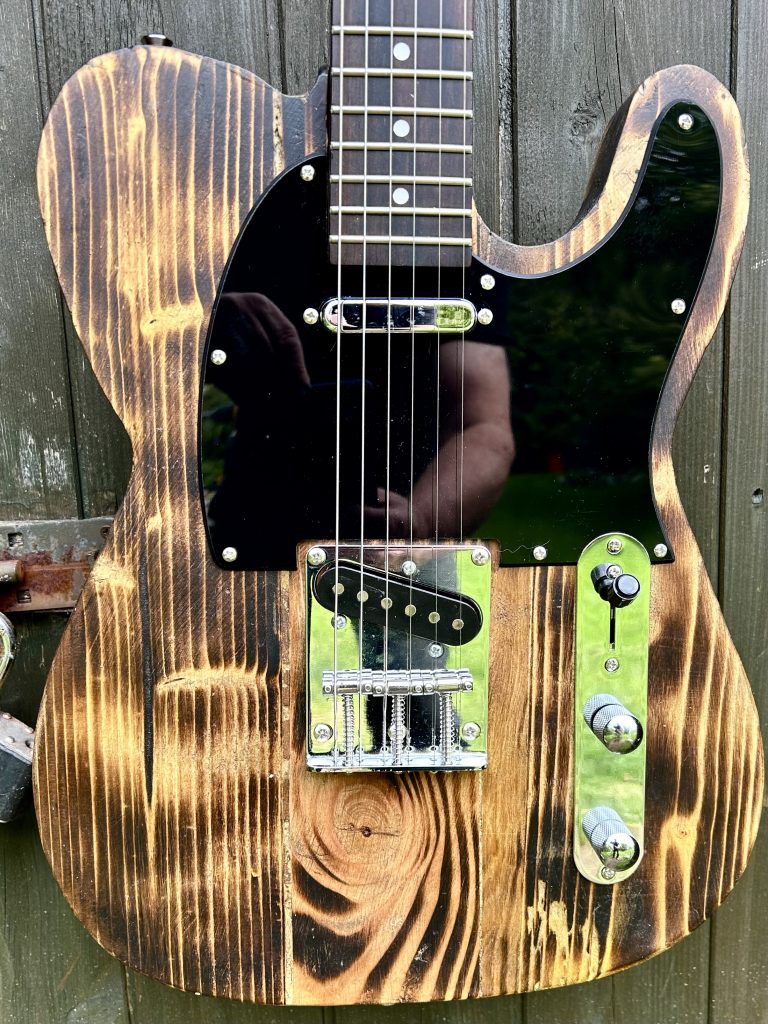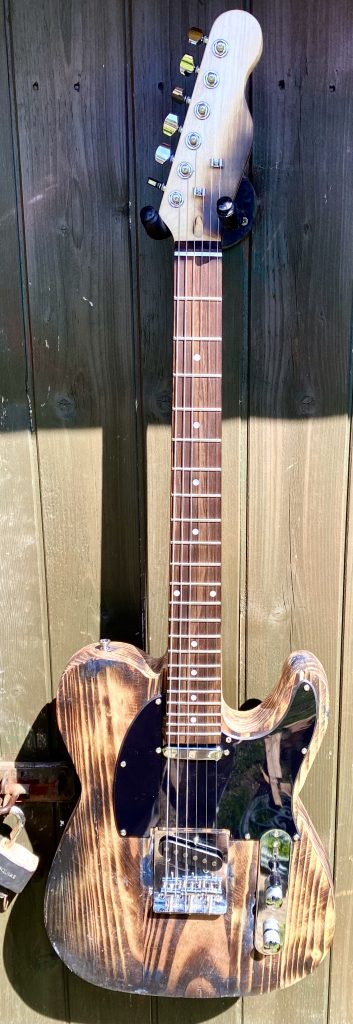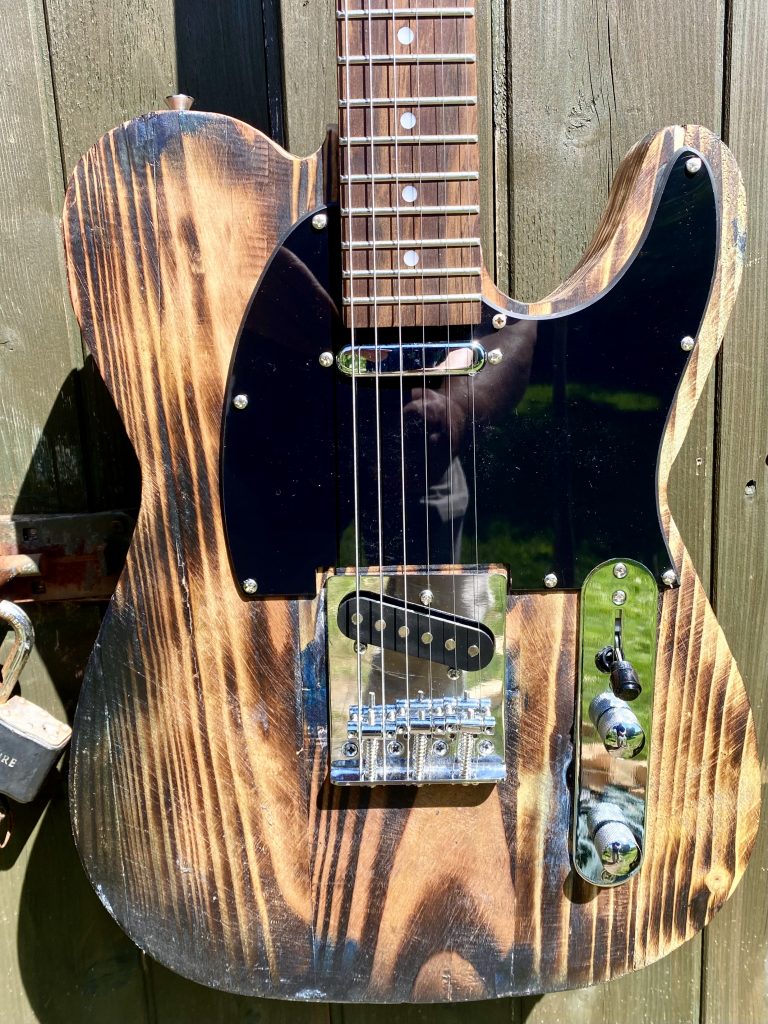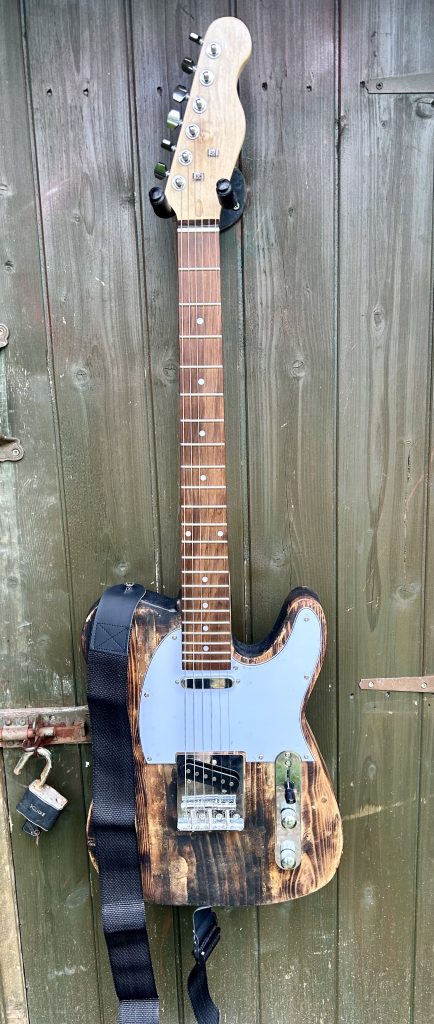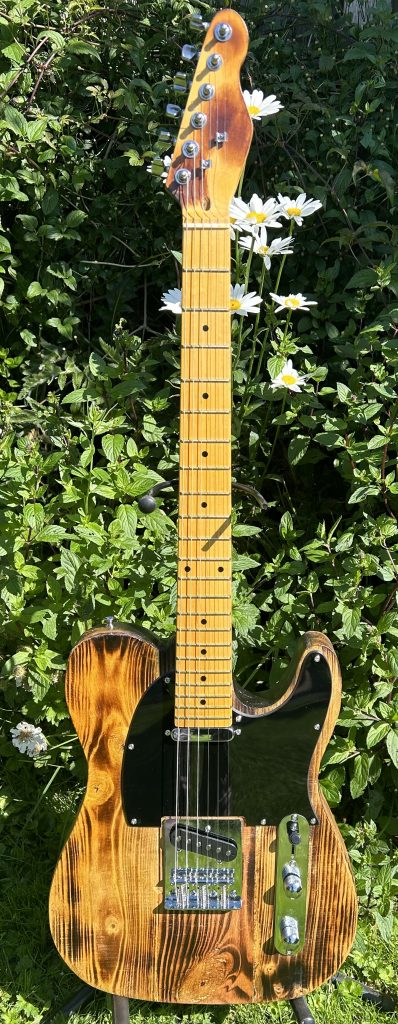
Free UK delivery – Handcrafted Rat Bait guitar built in June 2024 from new and reclaimed parts – Full scale.
The neck on this guitar as been slightly aged and given a light coat of Honey Nitrocellulose Lacquer. This Telecaster inspired guitar has a body made from salvaged material, pieces scavenged from various places: a bit of a 1970s Austrian cupboard, Exmoor Spruce and bits of recycled roofing timber, all assembled, constructed and shaped by hand in a rat infested shed in North Devon. This barnwood style body is routed to take a standard neck pickup and standard Telecaster bridge pickup. A handmade rustic body that has dents, scratches and is finished in beeswax. No computer was used or harmed in the construction of this guitar body…
This electric guitar features a 6-string configuration, 22 frets on a maple neck, perfect for right-handed players.
- Body made from salvaged materials
- Body routed to take a standard Tele neck pickup and standard Telecaster neck pickup
- Three way switch
- Chrome Neck Pickup – Vintage warm tone (new old stock)
- Black scratchplate
- Telecaster bridge pickup – vintage tone, old school twangy
- Unused 22-fret maple neck
- 10mm Machine Heads
- Nut Width: 1.656 In. (42 mm)
- Scale Length: 25.5″
- Rotosound strings
This handcrafted electric guitar boasts a solid body made from recycled materials and a natural finish. The maple neck adds to the overall beauty of the instrument, making it a perfect addition to any musician’s collection.
